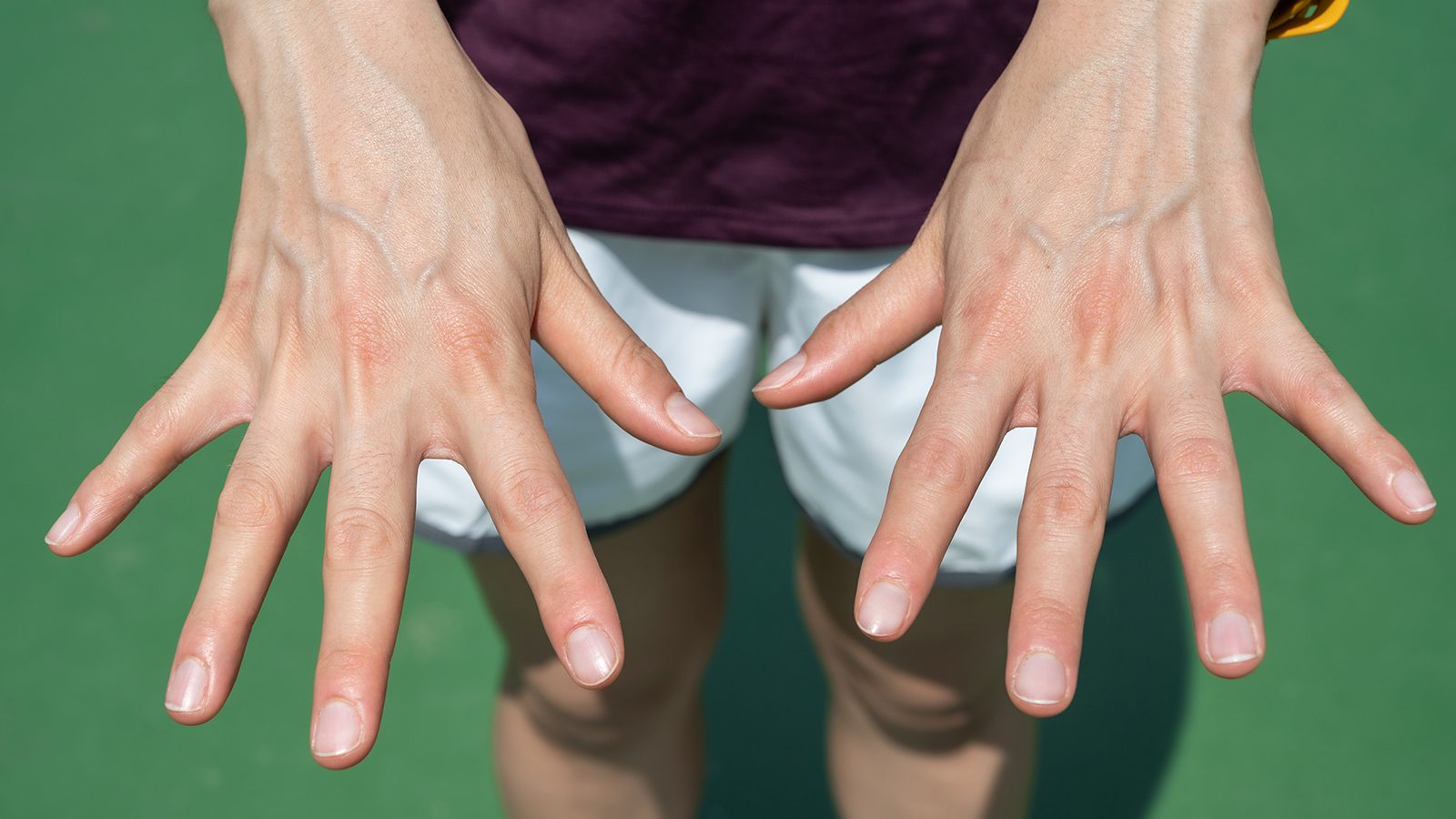If you have veiny hands, you might wonder if it signifies an underlying health condition. Typically, bulging veins don’t indicate a medical problem, as this occurs due to natural factors such as aging or exercise. Also, having low body fat can make your veins more visible in every area of your body, especially your hands and feet. Sometimes, genetics and hot weather can cause the veins to bulge also.
In rare instances, veiny hands may occur due to medical conditions like deep vein thrombosis (DVT) or superficial thrombophlebitis, both caused by inflammation due to blood clots. The signs of medical conditions in hand veins aren’t always easy to spot, so it’s best to make a doctor’s appointment if you have concerns. Below, doctors provide insights on what veiny hands may suggest about your overall health.
Regular Changes in Hand Veins
As we said above, veiny hands may happen naturally due to aging and not an underlying health problem. When you get older, the skin becomes thinner due to a loss of collagen, making it easier to see the veins in your hands. Also, older people tend to have lower body fat, increasing vein visibility. In addition, physical changes such as the outside temperature, exercise, wearing tight clothing, and excess sun exposure can enhance the appearance of veins. So, if you have veiny hands, don’t worry unless you experience pain, swelling, or red skin in the affected area.

Veiny Hands and Cardiovascular Health
If you have visible hand veins, it may indicate optimal heart health and blood circulation. Those who regularly engage in cardio workouts tend to have a better vascular system because their blood flows more easily. In addition, people who exercise often usually have a healthy body weight, making them more likely to have veiny hands. However, excessive vein visibility can also indicate high blood pressure in some cases.
Your blood pressure naturally rises during exercise, but intense exertion over months or years can strain the body immensely. Therefore, your body goes into fight-or-flight mode, producing excessive cortisol and increasing blood pressure. If you’re an athlete or bodybuilder, give your body and heart adequate rest, and don’t push yourself beyond your capabilities.
Veiny Hands and Hydration Levels
Dehydration can make veins appear more prominent because the blood becomes thicker if it doesn’t contain enough water. So, it takes more effort for your heart to pump blood throughout your system, which increases your blood pressure. In essence, your body will retain water if you have poor hydration status, making it more likely for hand veins to occur.
However, you can gradually increase your water intake if you struggle to drink enough each day. Carrying a reusable water bottle to work or school can help you remember to stay hydrated. Experts say to aim for 2-3 liters of water daily, and more if you exercise often or live in a hot climate. By drinking more water, you can take steps to prevent hand veins and improve your overall health, including your circulation.
When Veiny Hands Indicate a Medical Issue
As mentioned above, most hand veins don’t signify a severe medical issue and occur naturally due to aging, genetics, and exercise. Low body weight and good circulation can also make veins more visible. However, in some cases, veiny hands can indicate medical conditions and vein disorders such as deep vein thrombosis (DVT), superficial thrombophlebitis, or phlebitis.
Deep Vein Thrombosis
DVT occurs when a blood clot becomes lodged in a vein deep within the arms or legs. People with injured veins, a sedentary lifestyle, or genetic conditions that increase blood clot risk are at the highest risk of developing DVT. Also, having cancer, obesity, an autoimmune disease like lupus or inflammatory bowel disease (IBD), varicose veins, and pregnancy can make this condition more likely.
While DVT isn’t necessarily life-threatening, the blood clots could dislodge and travel to your lungs, known as a pulmonary embolism (PE). However, this occurs most often in the legs because the blood pools in the lower extremities.
Superficial Thrombophlebitis
Hand veins may also appear due to superficial thrombophlebitis when a vein just under the skin’s surface becomes inflamed due to a blood clot. This condition commonly occurs because of an injury or recent IV catheter use. Health symptoms of thrombophlebitis include pain, tenderness, and vein bulging. Usually, thrombophlebitis subsides with at-home remedies such as warm compresses, anti-inflammatory care, and keeping your arm elevated. The condition typically heals without complications within one to two weeks, but your doctor may prescribe medication if necessary.
Phlebitis
Finally, you may have hand veins if you have phlebitis or vein swelling caused by an injury, infection, or underlying medical condition. Like thrombophlebitis, it usually heals with home remedies and requires no other treatment. However, if you have DVT, your doctor may prescribe anticoagulant blood thinners or specific therapies to dislodge blood clots.
Hand veins usually don’t pose a serious risk, but you should make a doctor’s appointment if you have health concerns. They can recommend a treatment to reduce swelling and blood clots if you have them. However, following the pillars of health to increase circulation and prevent blood clots is essential, such as exercising regularly, eating a balanced diet, employing stress management techniques, and staying hydrated. Also, compression sleeves or stockings can help increase blood flow and lower your risk of developing dangerous health problems.

Final Thoughts on What Veiny Hands Reveal About Your Health
Hand veins can offer clues about your health, such as having high blood pressure or poor hydration. Experts have discovered a link between veiny hands and cardiovascular health, as prominent veins indicate optimal circulation. Sometimes, veins in the hands may signal severe conditions like deep vein thrombosis or high blood pressure. However, they mainly occur for benign reasons like exercising in the heat, aging, or wearing tight clothing.
If you have unusual symptoms, make sure to consult with medical professionals so you can receive the proper treatment. Usually, they will recommend at-home remedies like warm compresses or other anti-inflammatory measures. However, they may also recommend thrombolytic therapy.




















